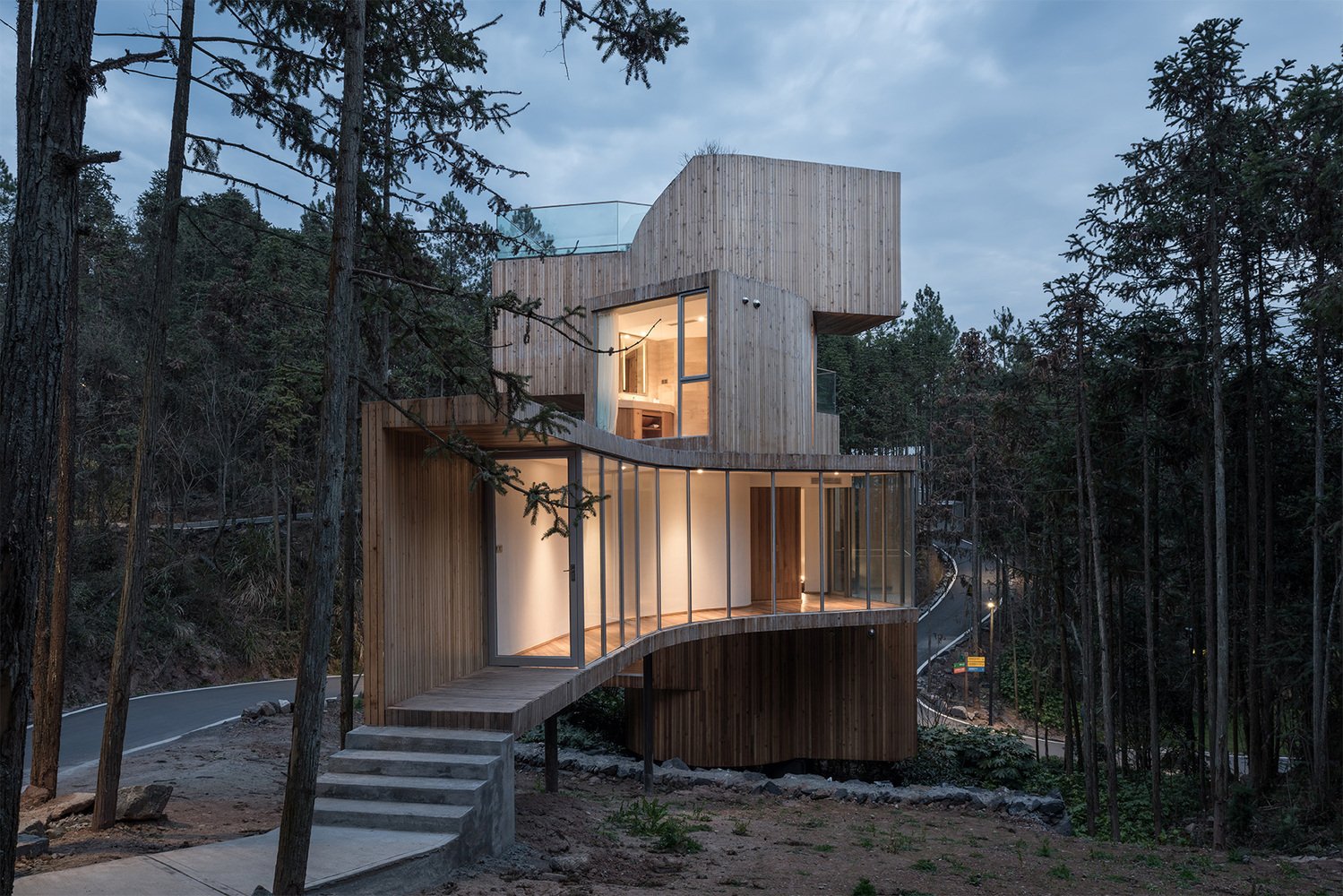#12147. Forest Harmony: Dynamic Wooden Facade with Curvilinear Elements
This modern forest house is a masterful example of organic integration of architecture into the natural environment. The facade is completely lined with vertical wooden slats, creating a visual connection with the surrounding coniferous forest. The verticality of the cladding gives the structure dynamism and visually increases its height.
The volumetric-spatial composition of the building is based on a combination of several geometric forms offset relative to each other. The upper part of the building hangs over the lower part, creating a dynamic silhouette and forming a protected terrace. Of particular note is the smooth curvilinear line of the facade on the second level, which contrasts with the more rigid geometric forms of the rest of the building.
The architects masterfully used glass to create a visual lightness of the construction. The panoramic windows, which occupy a significant part of the facade, not only provide abundant natural lighting for the interior spaces but also create the effect of blurring the boundary between the interior and the surrounding forest. This solution looks especially effective in the evening when the interior lighting transforms the house into a glowing beacon amid the dark forest.
In the design of your own house facade, you can borrow several techniques: using natural wood cladding for harmonious combination with natural surroundings, playing with geometric volumes to create a dynamic composition, combining closed and glazed surfaces for a balance of privacy and connection with the environment, as well as thoughtful placement of terraces and panoramic windows to maximize the use of viewpoints.
